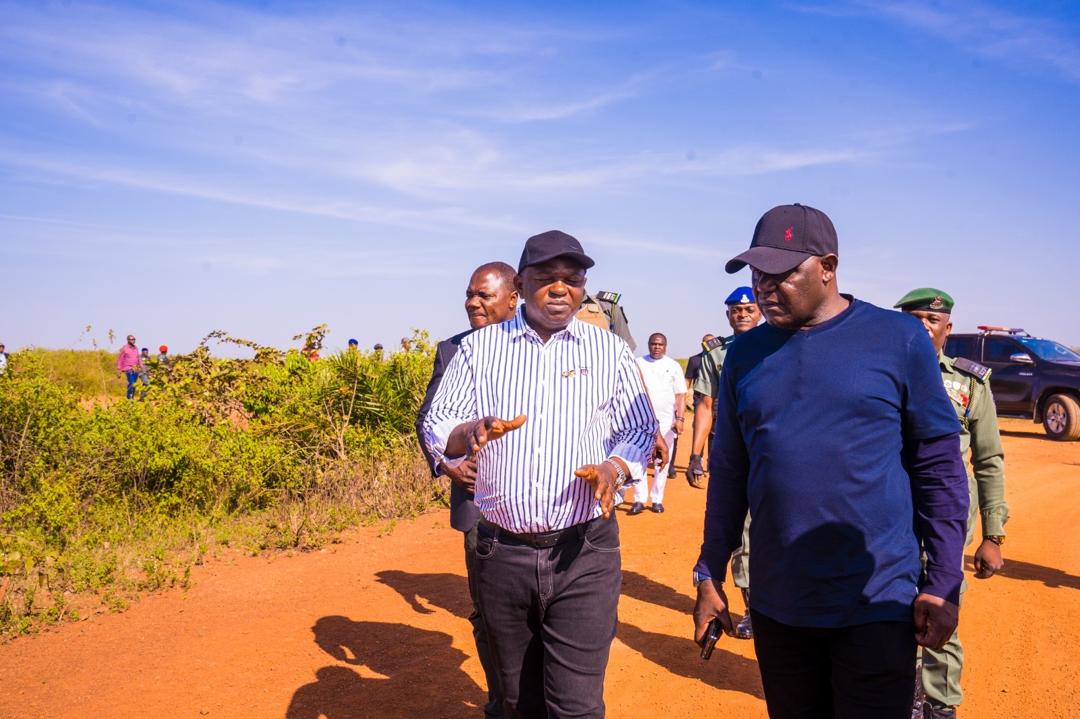The Federal Government has unveiled a comprehensive strategy to rehabilitate aging dams and build new multipurpose facilities across Nigeria, aiming to supercharge irrigated agriculture, ramp up hydropower output, and generate jobs for the youth.
announced the initiative during an on-site assessment tour on Wednesday to the Azare-Jere Irrigation Project and Gurara Multipurpose Dam in Kaduna State. He was accompanied by Permanent Secretary Mr. Richard Pheelangwah and several technical directors.
“This aligns directly with President Bola Tinubu’s mandate to my ministry: to drive food security through expanded irrigation, bolster the national grid with reliable hydropower, and empower our youth with employment opportunities,” Utsev told reporters at the facilities.
The ministerial visit focused on evaluating the operational health of these key assets, pinpointing bottlenecks, and charting swift remediation paths. “We’re conducting a full audit to ensure these projects deliver maximum value,” he added.
Targeted Rehab and New Builds Along Key Corridors
Utsev disclosed that a slate of existing multipurpose dams has been earmarked for urgent rehabilitation, while fresh constructions are in the pipeline—particularly along the strategic Sokoto-Badagry Highway corridor. These efforts, he said, will unlock vast tracts of arable land for year-round farming and inject gigawatts of clean energy into the grid.
Nigeria currently boasts over 300 dams, but many suffer from siltation, structural decay, and underutilization, hampering agricultural productivity in a nation where farming employs nearly 70% of the rural workforce. The minister’s blueprint addresses these gaps head-on, promising to irrigate millions of hectares and mitigate perennial flooding risks.
Insecurity Hampers Operations, But Commitment Holds Firm
Facility Manager Engr. Gazali Tukur Mohammed acknowledged persistent security threats as a “major hurdle” to seamless operations at both sites. “Banditry and communal clashes disrupt supply chains and staff safety, but our team is resolute in providing water to the Federal Capital Territory (FCT) and beyond,” he said.
The Gurara Multipurpose Dam, a 22MW hydropower behemoth completed in 2012, and the Azare-Jere Irrigation Scheme—spanning 8,000 hectares in Bauchi and Jigawa states—were both developed under the ministry’s oversight. Parts of their management have been concessioned to private firm Grams and Abel via a Public-Private Partnership (PPP) model, blending government funding with corporate efficiency.
Broader Implications for Food Security and Energy
Utsev’s tour underscores a renewed federal push to harness Nigeria’s water resources amid climate volatility and energy deficits. With hydropower accounting for about 20% of the country’s electricity (roughly 2,000MW), scaling up could ease chronic blackouts plaguing industries and households.
The initiative also ties into Tinubu’s broader economic agenda, including the National Livestock Transformation Plan and Renewed Hope Agricultural Initiative, which prioritize irrigation to cut food imports and stabilize prices.
Stakeholders have welcomed the plans but called for robust community engagement to address local grievances, especially in dam catchment areas prone to displacement. As implementation ramps up, the ministry vows quarterly progress reports to maintain transparency.
This development positions Nigeria to potentially add 1,000MW of hydropower capacity within the next few years, while irrigating an additional 500,000 hectares—enough to feed millions and create thousands of agro-jobs.

